10 - Resilient Cities, with Jainey Bavishi
“I have a two-year-old now. I want to make sure that wherever she ends up living is livable and she can stay safe and resilient, wherever her future leads her. And that means making the investments and taking the action now. ”
Jainey Bavishi is the director of the New York City Mayor's Office of Climate Resiliency — overseeing more than $20 billion worth of investments to prepare New York City for the impacts of climate change. This includes bolstering the city’s coastline against coastal storms and high-tide flooding, preparing for intense rainstorms, and protecting New Yorkers against deadly heat waves.
We met with Jainey the spring of 2021, well before the current hurricane season provided a dramatic demonstration for why these efforts are so critical to the city’s future. She brought us to the newly rebuilt boardwalk of Edgemere, an oceanfront community on the Rockaway peninsula, not far from JFK airport, in Queens. The Rockaways were hit hard by Hurricane Sandy in 2012, and Edgemere, whose very name means “at the sea’s edge,” is among the communities still grappling with the hard choices, presented by changing weather and rising sea levels.
Jainey got her start working on equitable disaster recovery efforts after Hurricane Katrina, and went on to lead climate preparedness efforts for the Obama administration’s Climate Action Plan. In 2017, she joined the de Blasio Administration to lead a team of urban planners, architects, engineers, lawyers, and policy experts who to develop science-based programs and policies that address impacts of climate change.
From heatwaves to hurricanes, flooding to FEMA grants, our conversation ranged through the myriad ways our communities will need to think differently about how we build for an ever-changing future. Jainey’s insights humanized and made tangible the profound social justice and economic impacts of climate change, and the complexity in designing an equitable recovery plan. Jainey was recently nominated by President Biden to a top leadership position at the National Oceanic and Atmospheric Association (NOAA), and is awaiting Senate confirmation.
NYC Mayor’s Office of Climate Resiliency - https://www1.nyc.gov/site/orr/index.page
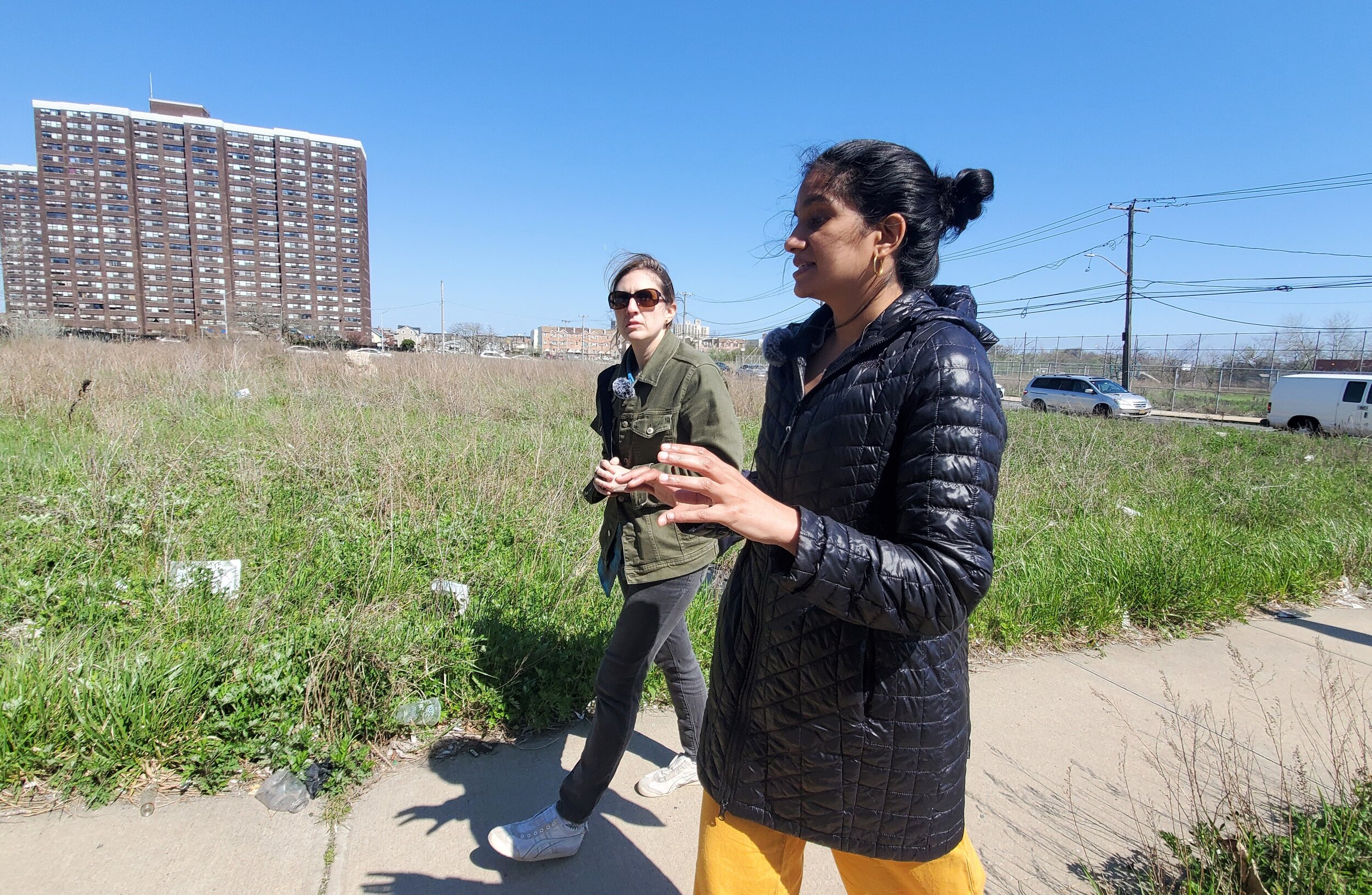
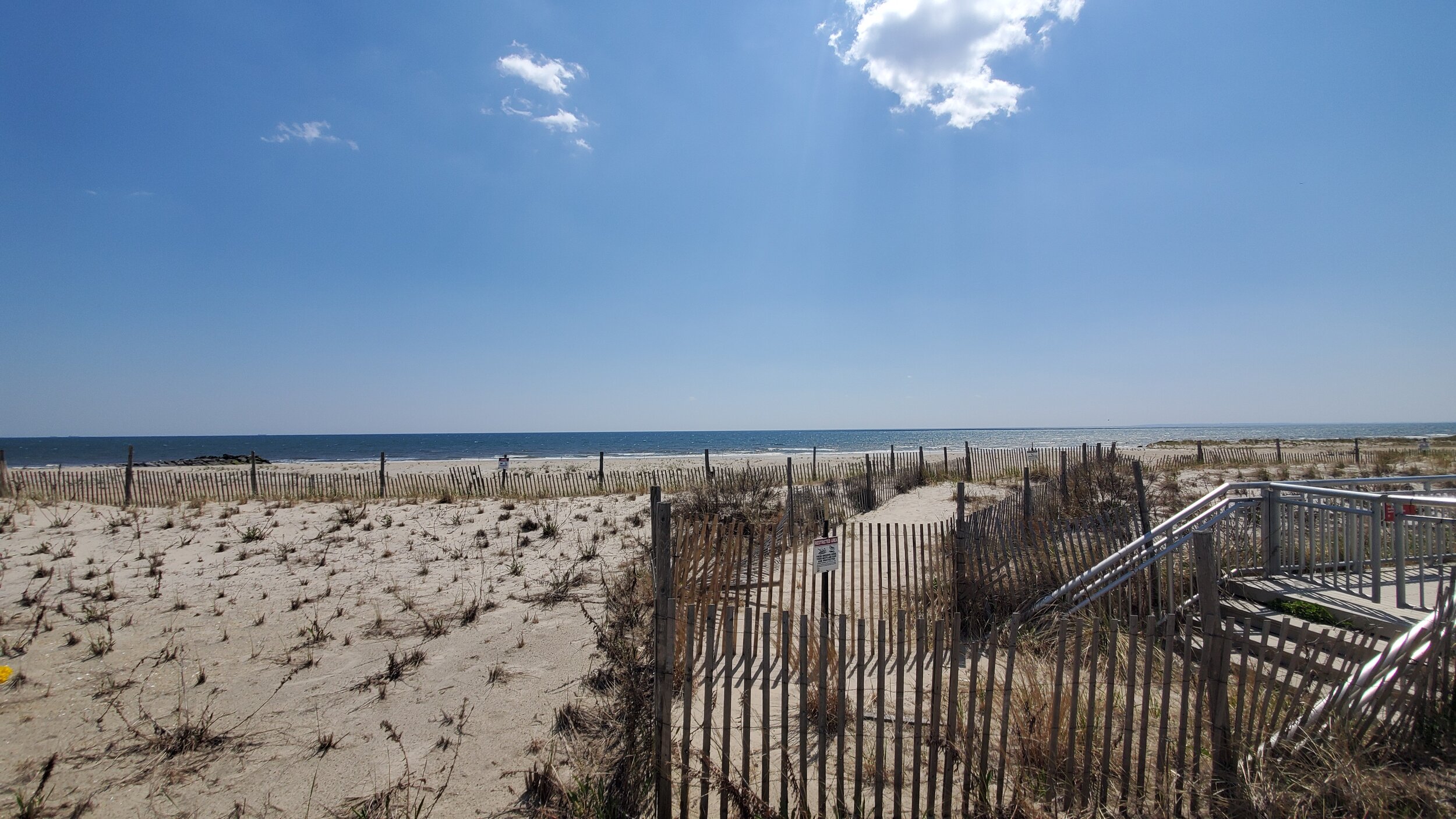
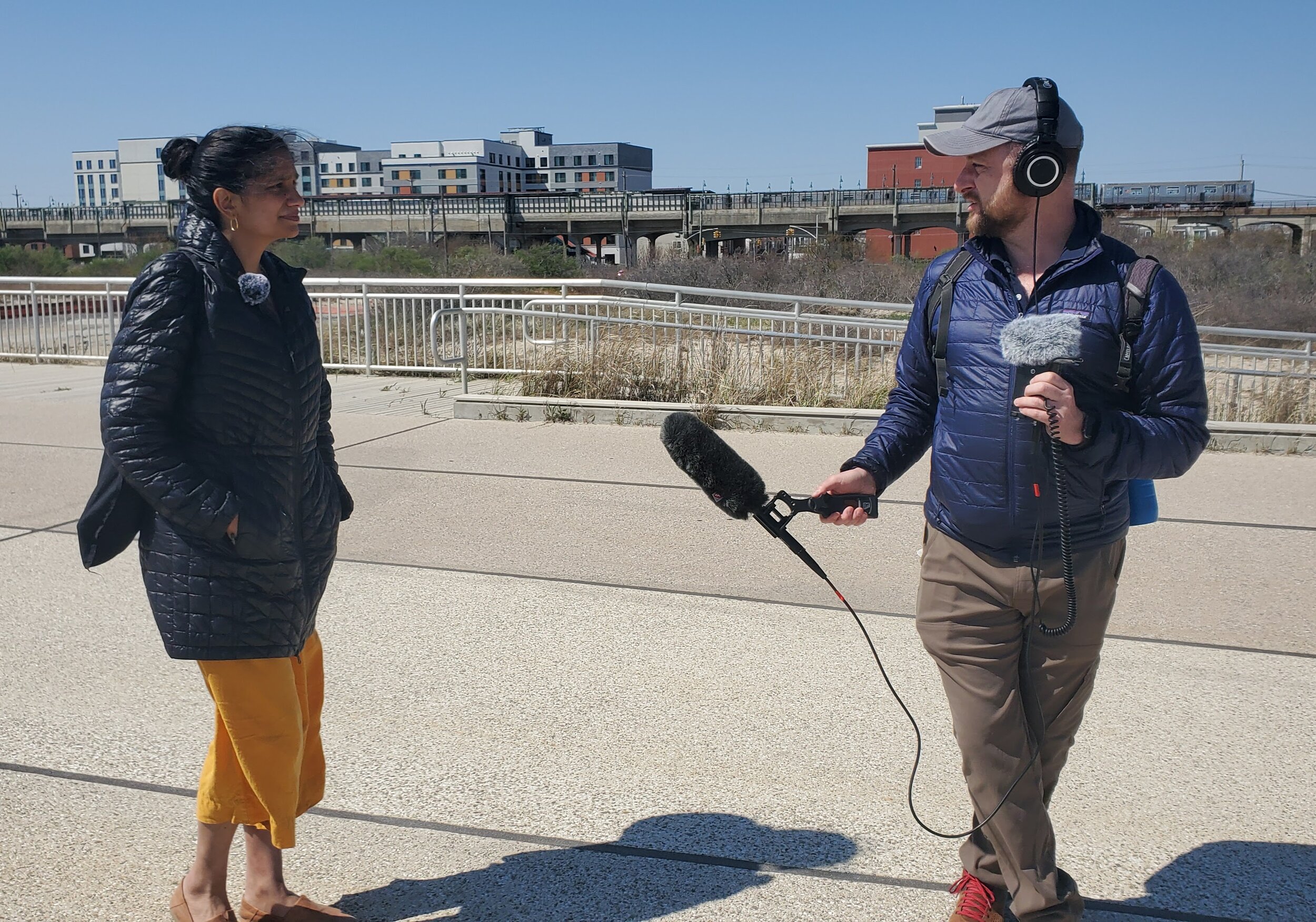
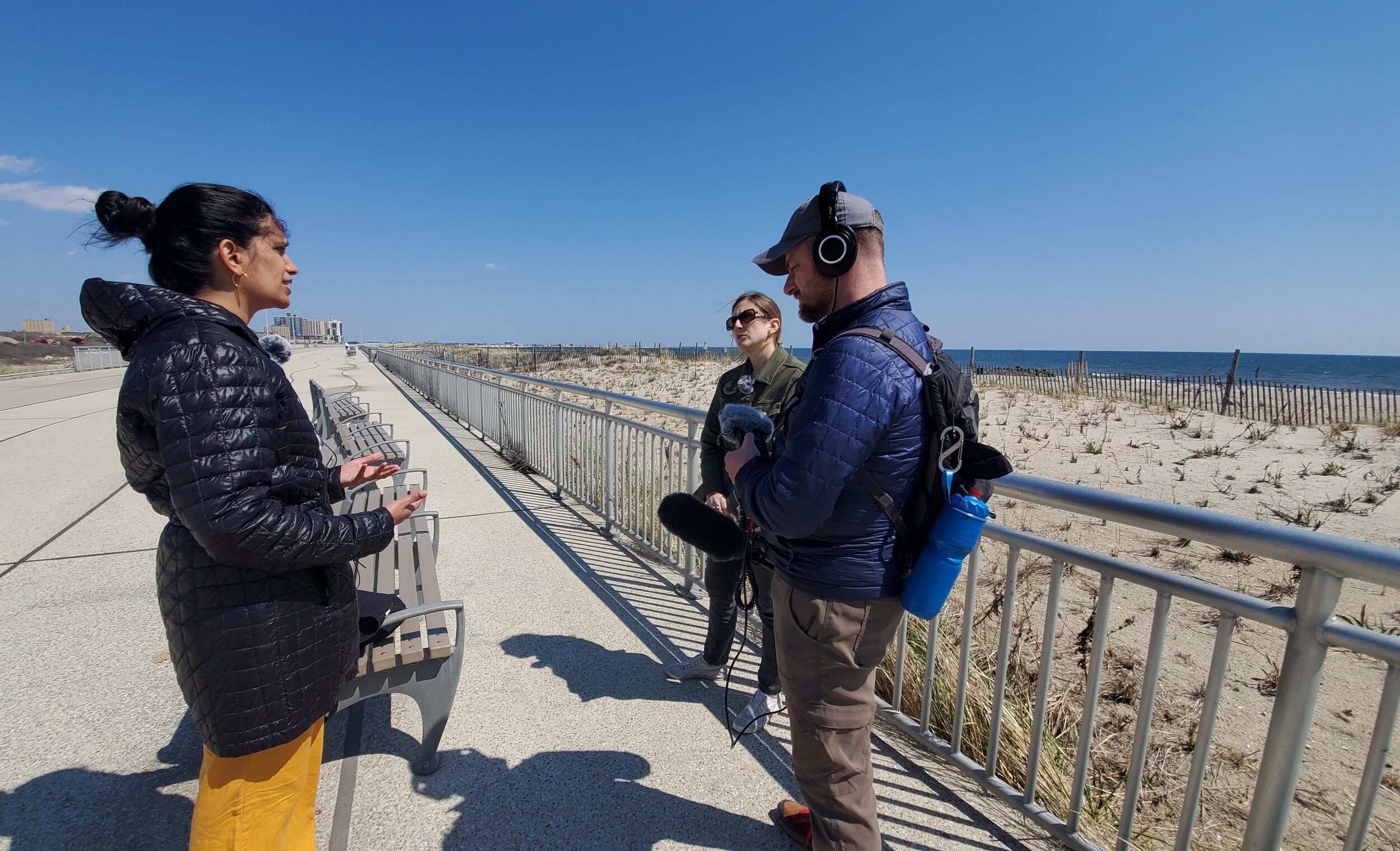
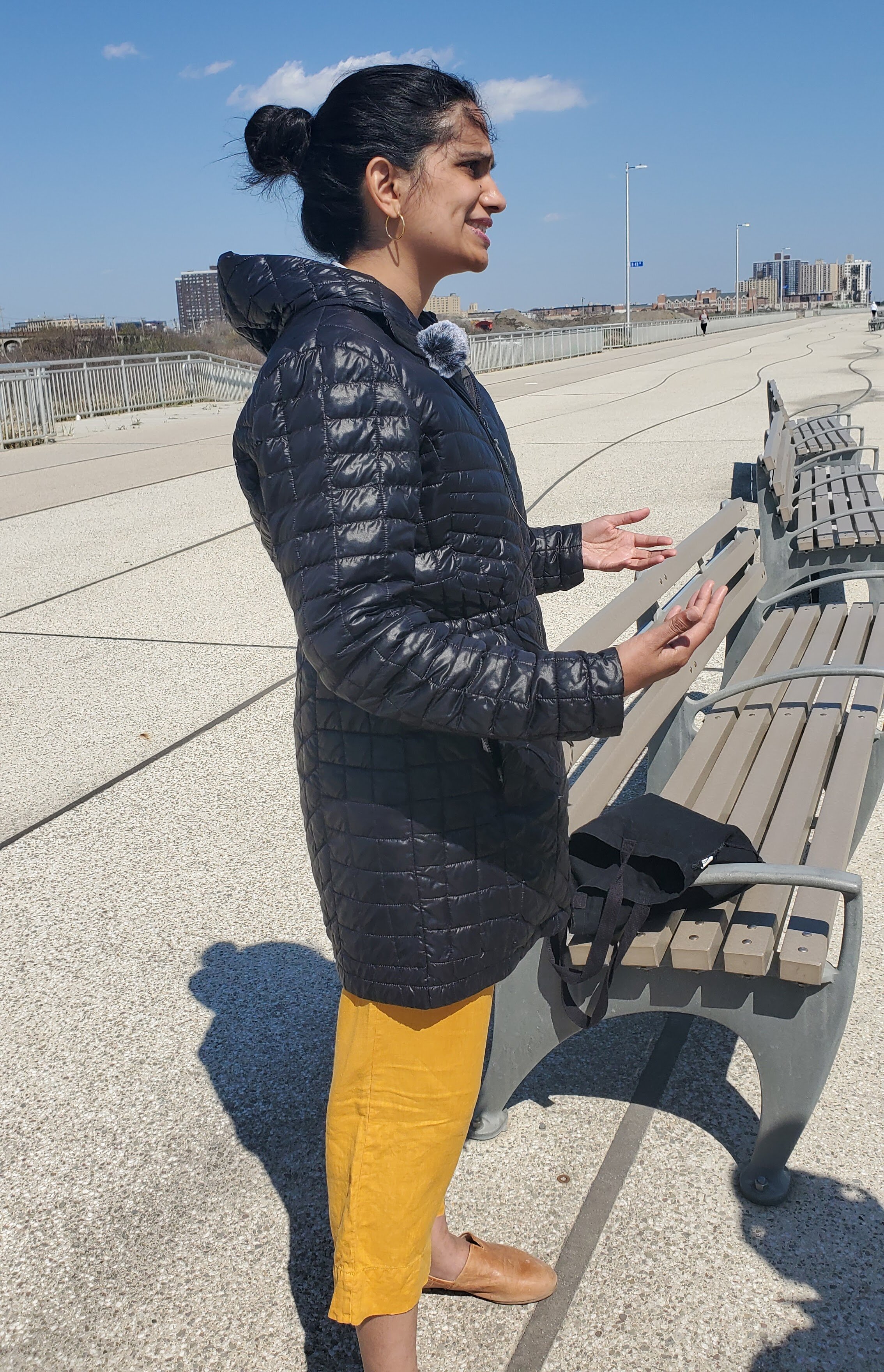
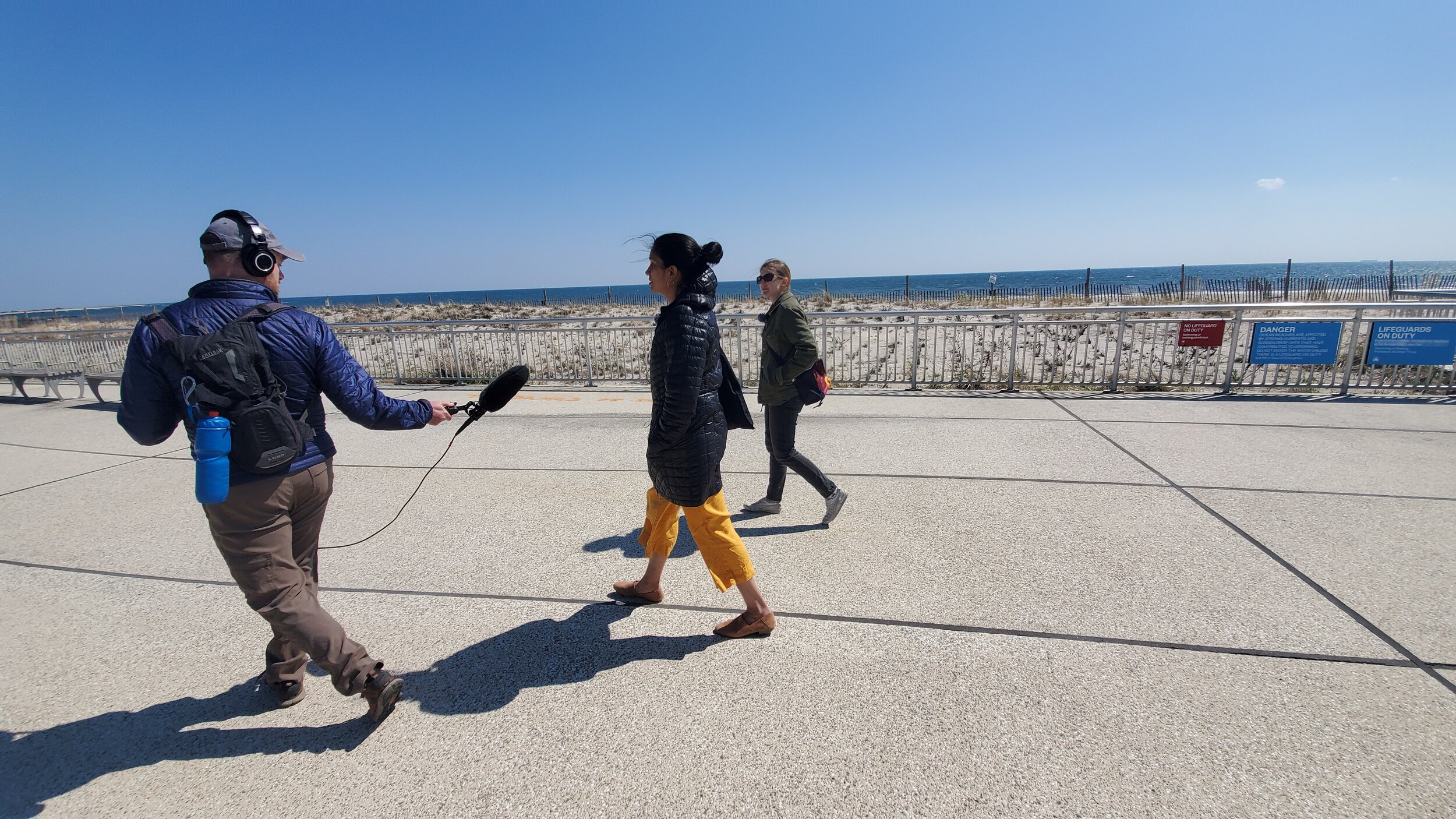
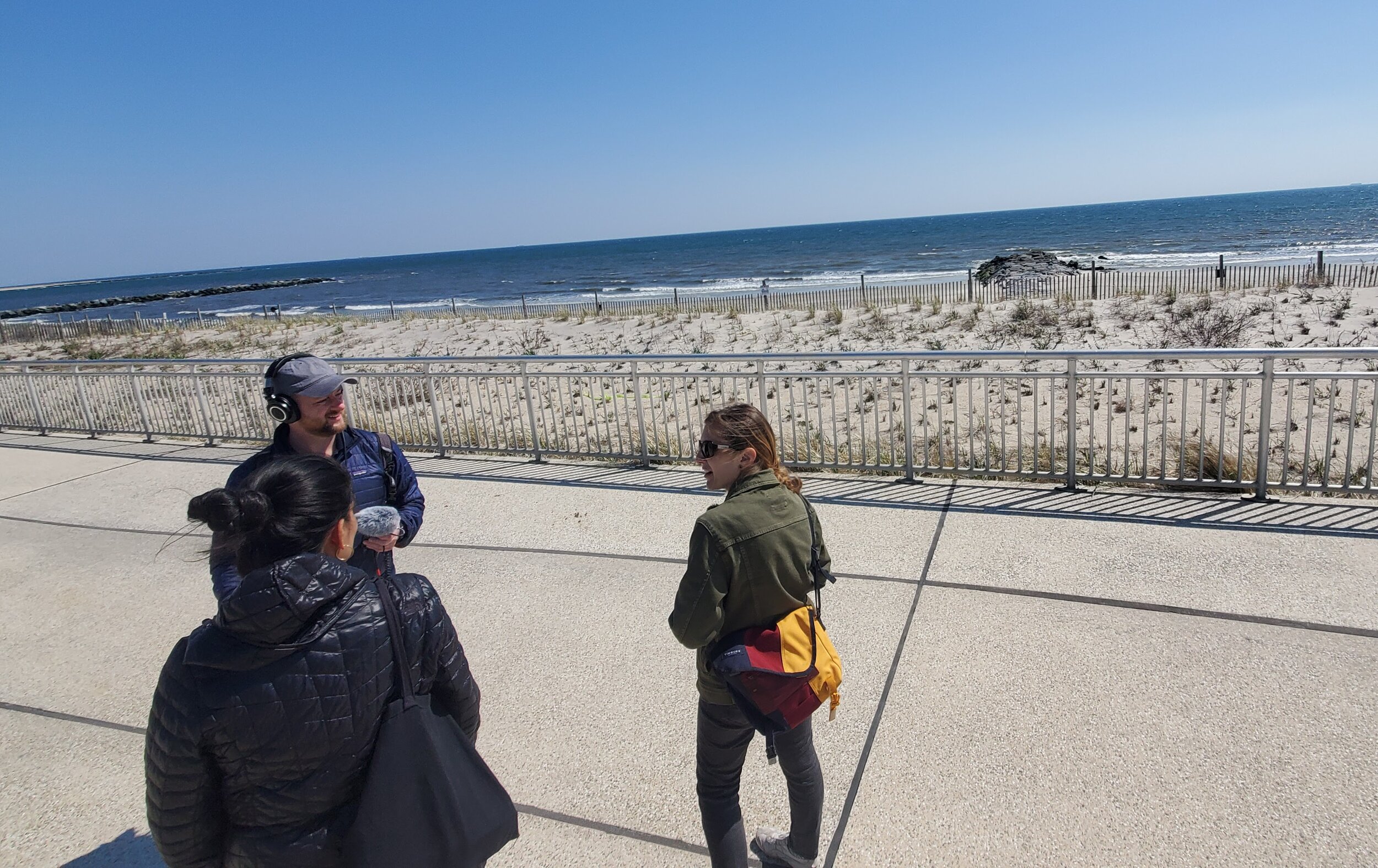
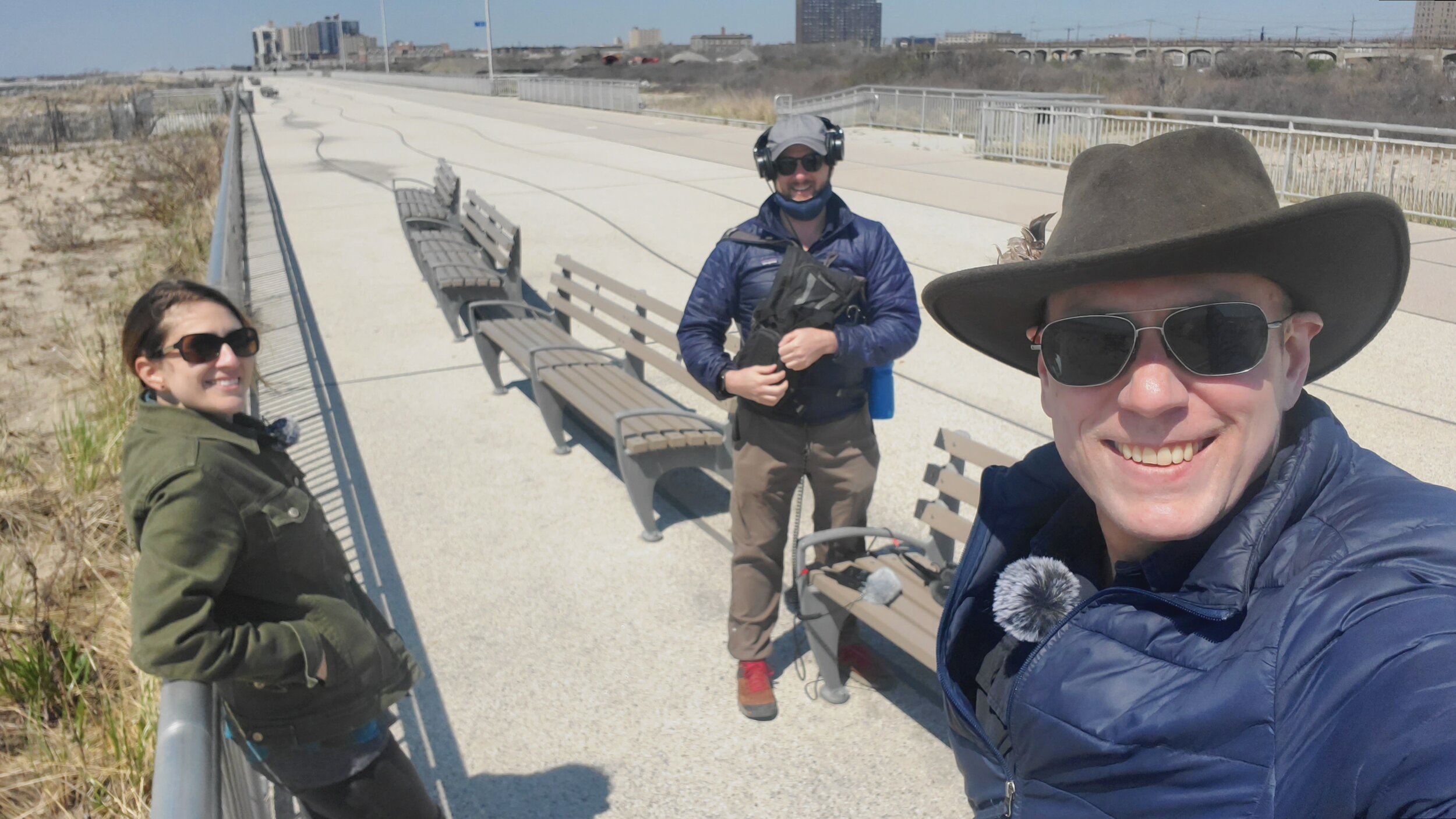

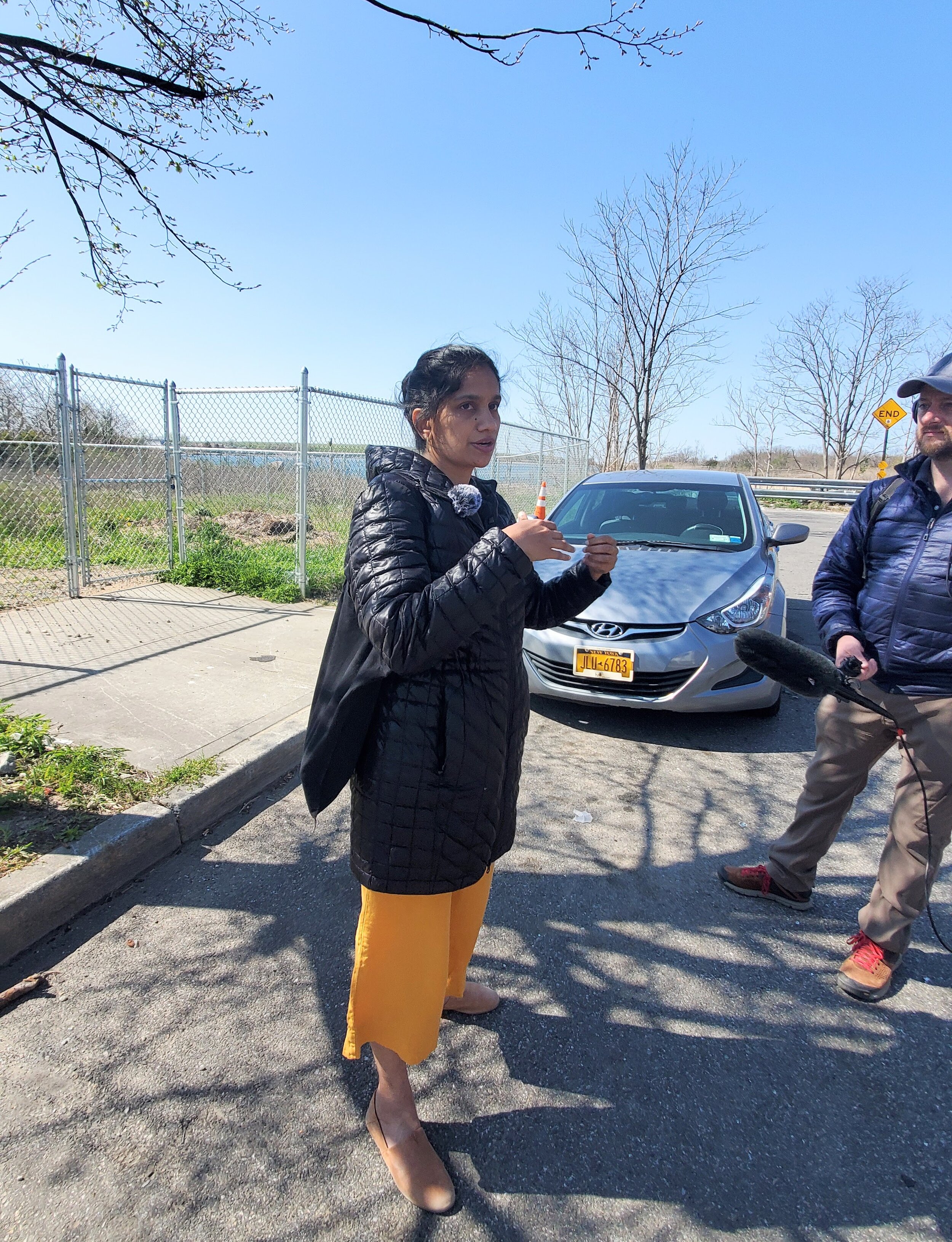
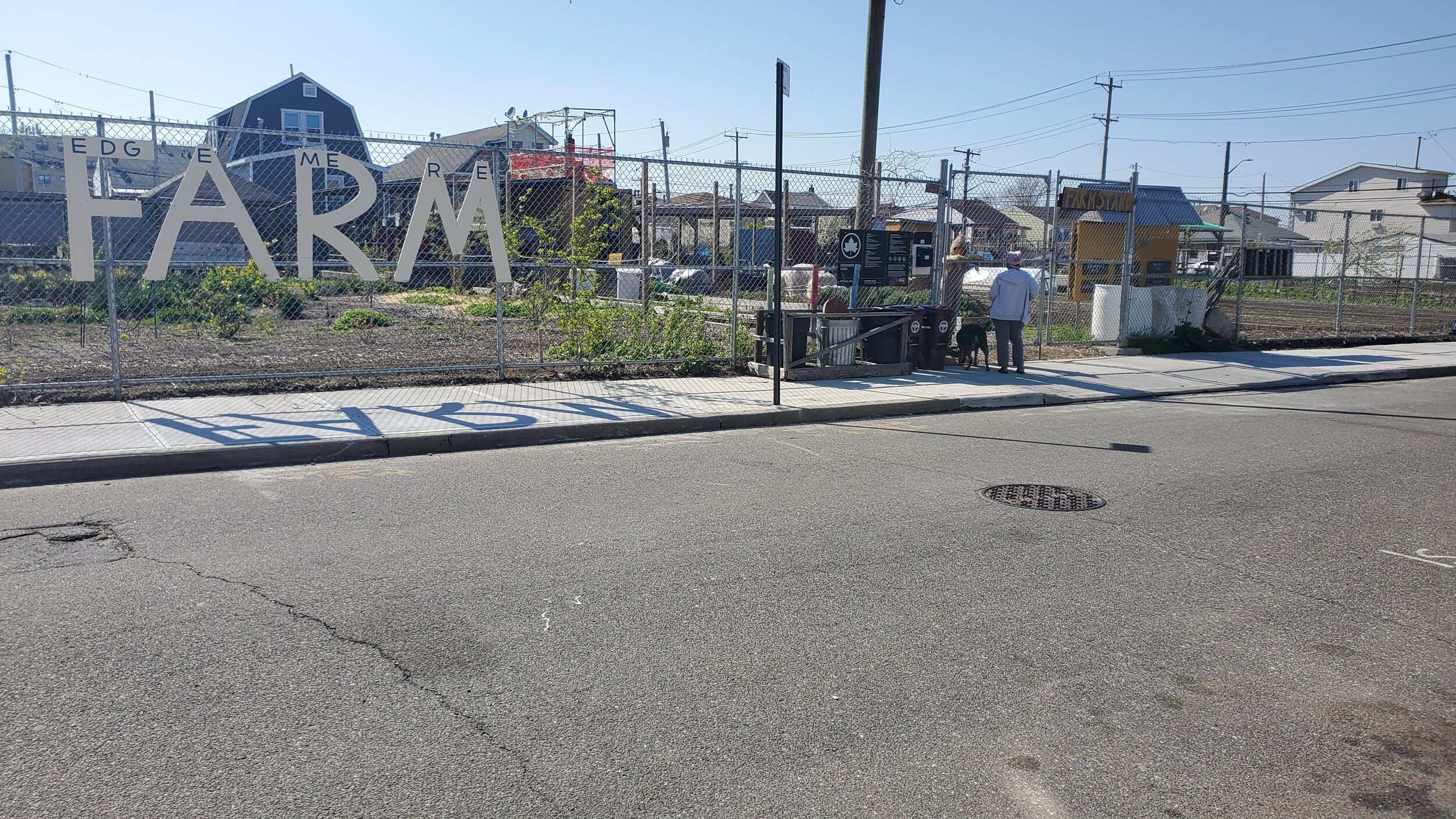
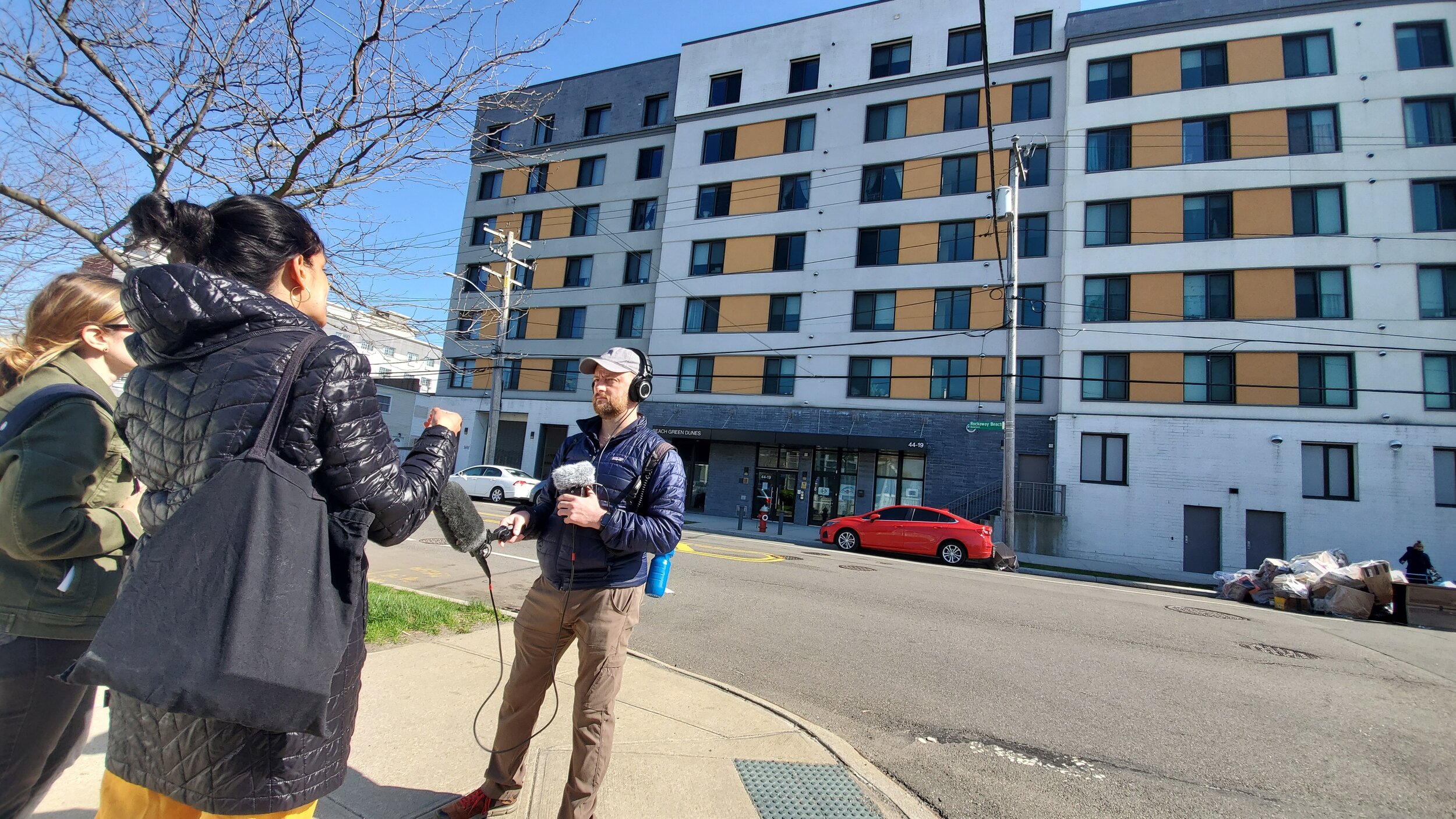
Transcript
Jainey:
I have a two year old now and I think that the mandate becomes even stronger, as I think about the next generation. I want to make sure that wherever she ends up living is livable. She can stay safe and resilient wherever her future leads her. And that means making the investments and taking the action now.
Emily:
Jainey Bavishi is the director of the New York City Mayor's Office of Resiliency, overseeing a $20 billion plan to prepare New York City for the impacts of climate change. This includes the 520 miles of the city's coastline. But as we saw during the recent storms, every neighborhood in the city is vulnerable to the extreme weather caused by global warming.
Jay:
Hurricane Ida made landfall in New Orleans and moved up the East Coast as many hurricanes do. But climate change, as predicted, is making big rainstorms bigger. When Ida reached New York on the evening of September 1st, it dumped more than three inches of rain on the city in a single hour, overwhelming drainage systems and causing catastrophic flooding across the region. At least 38 people died, the worst natural disaster to strike the area since Superstorm Sandy in 2012.
Emily:
Sandy was a defining event for the city's resiliency efforts, and Jainey wanted us to see Edgemere, an ocean front community on the Rockaway Peninsula, not far from JFK Airport in Queens. The Rockaways were hit hard by Hurricane Sandy in 2012, and Edgemere, whose very name means at the sea's edge, is among the community still grappling with the hard choices presented by changing weather and rising sea levels.
Jay:
But there were signs of hope and life. We strolled with Jainey along Edgemere's newly fortified section of boardwalk near Beach 45th Street, before heading inland to the bay side of the peninsula. The wind was high and the dunes on that section of beach were closed, so as not to disturb the breeding season of the migratory piping plovers and other nesting, endangered species.
Emily:
Where did you bring us today, this beautiful spot on the beach? Where are we?
Jainey:
We're on the Rockaway Peninsula. We're actually right here on Rockaway Beach. This is a community, the community that's behind Rockaway Beach was really devastated by Hurricane Sandy. The storm surge hit this beach pretty hard. We're actually standing on a rebuilt Rockaway Boardwalk, but this boardwalk prior to Sandy was a wooden boardwalk. And the storm surge actually picked up the boardwalk and threw it into the community behind it.
We've rebuilt this Rockaway Boardwalk as a coastal protection measure. You'll notice that this is a concrete boardwalk now, and it has steel pilings that it's built upon. So this is actually one of the multiple lines of defense on this beach. Just in front of the boardwalk here, we are looking at a sand dune that was built right after Sandy. We're actually working with the Army Corps of Engineers to reinforce the sand dune with rock and steel. We're putting new sand on the beach just to widen the beach and that will create another measure of protection. And then we're building new rock jetties or groins as we like to call them in coastal protection speak, that will help to keep the sand in place, so that we can slow down the pace of coastal erosion.
Jay:
So you worked in New Orleans after Katrina, you've done some work in Hawaii. What is different from place to place? And what patterns are consistent?
Jainey:
It's a great question. I've been in different kinds of roles in all these different places, but I would say that the cities that are furthest ahead on preparing for the impacts of climate change in this country, are the cities that have recently experienced disasters. It's because of this dynamic that federal dollars for resilience work, only flow after a disaster. Which is an inherently, it's a very reactive way of preparing for these challenges that we know are coming and should be taking proactive action on.
So places like Honolulu, which is a place that I've lived and worked, they know that they are going to experience really severe impacts of sea level rise and potential coastal storms, and have done some great planning for it. But they still have a long way to go to unlock the dollars that they need to actually build projects and take more proactive steps. Whereas New York and New Orleans have invested a lot of money into coastal protection in particular.
Emily:
That's an interesting dynamic. Its almost an oxymoron to sort of think of reactive prevention there. And you actually were at the federal level thinking about these issues with the Obama administration, right? What does it look like, not just this scale of a city, but when you're thinking resiliency from a national standpoint?
Jainey:
I think the federal government has a really important role to play in creating the enabling environment for resiliency. Now that might sound jargony, but what I mean by that is, we really need to start thinking about the impacts of climate change in every decision that the government makes. These projects that we're talking about, these adaptation and resilience projects, they're really expensive. So this project here in the Rockaways, is a project that's over $300 million. We are building another project on the Lower East Side of Manhattan, it's a 2.5 mile coastal protection project. It'll protect 110,000 people. It's called East Side Coastal Resiliency. It's a $1.45 billion project. Keep in mind that New York City is 520 miles of coastline. These are hundreds of millions of dollars that are going into coastal protection projects. A new class of infrastructure for New York City.
And New York City is just one municipality in the entire country. We need to advance these kinds of projects, but we also need to just build smarter, all across the board. Every new housing development, every infrastructure project, every bridge, every every runway we build at an airport, needs to be built with climate change in mind and the impacts of climate change in mind. I think that the federal government can play a really important role in that. Making sure that it's not just FEMA grants that are incentivizing resilience action.
Emily:
Is that the primary way they get distributed today, the FEMA grants?
Jainey:
It's FEMA and HUD. But it's post-disaster funding. It's these agencies that are really involved in post-disaster funding. But every department of transportation grant should also be accounting for climate change. Every department of energy grant should be accounting for climate change. Once we start baking it in that way, really mainstreaming accounting for climate impacts, then we'll start avoiding things like what we saw in Texas this winter. We need to be designing our energy grid with climate change in mind.
This is actually an action that we have taken in New York City. Just last month we passed a local mandate to require a consideration of climate impacts across our entire $90 billion capital portfolio.
Emily:
Wow.
Jainey:
This means that everything that's built with city capital dollars, every infrastructure project, every buildings project, will be designed with climate change in mind.
I think the federal government has an enormous opportunity to create these incentives. To essentially require that states, cities and tribes and territories, are planning for climate change across everything that they're doing. They also have the opportunity to incentivize action on these issues, pre-disaster. Let's create incentives so that states and cities are not waiting for the federal government to bail them out after a disaster, but rather improve moving their emergency protocols, thinking about climate change in their land use decisions, in their design and construction decisions, before a disaster. And the federal government can provide the necessary funding to actually enable states and cities to do that.
Emily:
How much of that is transferable versus really needing to be specific to the city, right? What are the lessons that are transferable from city to city here?
Jainey:
You make a good point. Even in New York City, we have 100 coastal neighborhoods, and I would say the strategies we're using to prepare each of those coastal neighborhoods, they're as diverse as the neighborhoods themselves. Right. You make a good point. All of this is incredibly local. But I do think that in terms of the data, for example, keep in mind the federal government is not just a bunch of agencies that work in DC. They have extension services, they have regional offices, they are actually in these communities that need to really be preparing for climate change. So there is a lot of capacity that's already there, that can be utilized to really be a catalyst for cities to get ahead of these challenges and at least get started.
Emily:
Is that something we do with other coastal cities or is there a way cities get together and sort of share this knowledge already?
Jainey:
There are a lot of networks that already exist. There used to be the 100 Resilient Cities Network that the Rockefeller Foundation sponsored that spun off into what's being called the Resilient Cities Network now. I'm on a WhatsApp group with chief resilience officers all over the country. We literally, we text each other all the time about what's working? "Here's a question I have. Do any of you have some insights that might help me solve this problem?" And it's great to have that kind of real time exchange.
We have engaged in much deeper partnerships with certain cities. For example, we are ahead on coastal resiliency because Sandy was a coastal storm. And it prompted us to really think about our coastal vulnerabilities for future Sandy like storms, hurricanes. Copenhagen in 2011 had a major rain event. And they have been implementing many strategies to protect their communities from precipitation. New York City is also vulnerable to precipitation impacts. It's notable that of course both hurricanes, if they're surge events and rain, they both cause flooding. But often, rain based flooding can affect inland communities. And those are communities that are not quite as prepared for flood events in the same way that coastal communities are.
And there are different strategies of course, that you have to use to protect communities from both kinds of flooding. So we've created this partnership with Copenhagen, where we took a delegation from New York City there to learn from the strategies they've implemented. They've come here and we've shown them some of the coastal projects that we are building. And we're in constant partnership with each other.
Jay:
How do you get someone, a lawmaker in Albany or someone in the Great Plains, someone who hasn't felt the effects or a community that they're sort of like, "Well, we're on high ground. We'll be fine." How do you get them to care about and invest in the more vulnerable places?
Jainey:
One thing to keep in mind is that, we're not just preparing for coastal events. This is not just a coastal problem. Climate change is bringing, certainly more coastal storms and sea level rise, and we're a city of 520 miles of coastline, so that's something that we're very concerned about. But it's also going to mean more intense heat waves, more days above 90 degrees. And it's going to bring more rain, which is going to affect inland communities. In the Midwest, this means wildfires and drought. Certainly in the West Coast states, we've seen that.
So I would say that climate change is bringing all kinds of impacts and mother nature doesn't recognize blue states versus red states. I think that there's actually an opportunity to take bipartisan action on these issues, because at the local level... When I was at the White House, I actually facilitated a panel on resilient building code with my predecessor in New York City and the mayor of Fairhope, Alabama. They were speaking the same language. Because they actually were dealing with so many similar challenges.
You don't have to look far to see that these disasters are intensifying, they're becoming more frequent and they're affecting a really broad swath of our population in one way or another. So I hope that the data and the images that we see on TV speak for themselves. 2020 was the most active hurricane season on record, Atlantic hurricane season on record. It was the second hottest year on record, only a hundredth of a degree cooler than 2016, which was the hottest year on record. I think we're just going to see those numbers keep climbing, unfortunately.
Jay:
It seems like with the pandemic, this sense of the delicateness and the interconnectedness, maybe that's a way where people who are in Iowa haven't felt a big event yet, are feeling it. I don't know.
Jainey:
Yeah. It was the tsunami in Japan that led to no black Camrys in the supply chain for a while. It just speaks to the interconnectedness of our global supply chain and global systems more generally.
Emily:
You also were making in this connection-
Jay:
What are these birds, now?
Jainey:
I think they're the piping plovers. It's the nesting season.
Jay:
Plover?
Jainey:
Yeah.
Emily:
That might have been a nesting dispute we overheard.
Jay:
Because the beach right now is, you're not allowed on the beach and there's some signage saying it's the tern nesting season.
Jainey:
Yeah. It's nesting season for the plovers, which is why you're not allowed on the beach.
Emily:
For this interview, Jay and I asked our producer, Matt Dellinger to tag along. As a journalist, Matt has written extensively on how infrastructure affects communities. He reported on urban planning work in Mississippi, following Hurricane Katrina.
Jay:
As an infrastructure nerd, Matt's job was to help us navigate the wonky details, but also to connect them to real life.
Matt:
To unpack resiliency a little bit, I know some of it is building some of it's fortress-building, some of it is planning for what we'll do when the disaster comes, and some of it is managed retreat and sort of, "Let's not build there anymore." How do you kind of decide where in the mix to be at a given moment in time?
Jainey:
Those are very hard questions. I think that in general, a lot of the work that we've undertaken in New York City so far, has been about how do we protect in place? How do we make these communities that we inhabit now safer, given what we know is coming? But there are already communities in the city that are experiencing chronic tidal flooding, which means every month during the full moon, there could be flooding in the community just from regular high tides due to sea level rise. So we've started in those communities with a lot community engagement, limiting density. So essentially saying that we're not going to make these communities any more dense than they are now. But I think there's still a big open question about where do we actually start saying we need to move?
When we go to Edgemere, one of the reasons we wanted to go over there, was because as part of the community planning process there, the community decided that there was a swath of homes in an area that is really vulnerable to wave action, where it didn't make sense to rebuild. After Sandy, the city sponsored this Build it Back program, to rebuild homes that were devastated by Sandy. And the only build it back strategy that was offered there was relocation. In that swath of land, that's really vulnerable to wave action, residents have the option to relocate and received assistance to do that, to somewhere else in the neighborhood, but couldn't rebuild in place.
I would say the other challenge here is that the city doesn't currently have funding in place to facilitate relocating people during blue sky times, meaning like in the absence of a disaster. If there's a disaster, then again, federal funds would be triggered and we could use those federal funds for buyouts. I would say in general, after disasters, when people want things to go back to normal as quickly as possible, they don't want to move. They want to go back to their homes, go back to their communities. They want things to be normal.
So it's really a bad time to be starting those conversations. We saw it in New York, we've seen it in New Orleans, we've seen it in other communities across the country. So really where we like to get to is a place where we're engaging communities about their risks ahead of time. And really like talking to individual homeowners about their risk tolerance. We want to be able to engage communities in those conversations, so that when buyout programs are available, they've already thought about what they would want to do, and they're not just starting to think about those things for the first time. But they're really complicated decisions and it's about an individual's risk tolerance. But it's also oftentimes what people's neighbors are going to do. So we need to be having those conversations at different levels.
Then the other thing I'll say about retreat, because of it is so complicated, is that, how do we think about retreat in a city with an affordable housing crisis? So ultimately, this is really a housing issue. You'll hear environmentalists really pushing the city on retreat saying, "We need to return this land to its natural state. It needs to be returned to natural wetlands." Okay, fair enough. But ultimately, this is a housing issue, because we also need to figure out where and how we facilitate moves for these folks who probably even at market rate, can't use that money to buy another home in another part of the city.
Emily:
Or are just priced out. No way to maintain that community even if you wanted to.
Jainey:
Exactly. So we've really been trying to reframe the issue as housing mobility. We talk a lot about housing stability and I think in the face of climate change, we also need to think about equitably creating programs that allow for housing mobility.
Emily:
Wait, you said housing mobility, not stability. What's the difference?
Jainey:
Well, we talk a lot about housing stability. It's still about stability, I suppose. We still want access to safe, affordable homes. But understanding that it may not be in the neighborhoods where people had safe and affordable homes in the first place.
Emily:
Got it.
Jay:
There's this precedent in the city of Robert Moses using eminent domain to take people's homes and slice neighborhoods in half in the Bronx. Obviously, a lot of people don't want to repeat that. But is it that different, if you're talking about there's infrastructure that needs to be in place and some people need to move, but you need to do that in an equitable way. Is what you're saying. In a way that is not forced. Not using eminent domain.
Jainey:
That's right. Choice is going to be really important to all of this. We want people to have a choice about whether or not they want to move. That's why I said, ultimately it's about engagement at different levels. Making people aware of their climate risk, but really sort of pushing people to engage in their individual risk tolerance, while having community conversations, so people can understand what their neighbors are thinking, what their neighbors are going to do, what plans are in place for mitigating those risks at a neighborhood scale and what the limits of those plans might be, ultimately.
Matt:
Sort of a slow motion version of when there's a hurricane and you say there's an evacuation, but some people stay and tape their windows. Their personal risk tolerance is higher and they sort of want to stay and have a party.
Jainey:
That's a great example. Yeah.
Emily:
So where are we walking to?
Jainey:
We are actually just walking down the Rockaway Boardwalk here. These groins that you see here, these rock jetties are all new and they were just completed.
Emily:
Oh, really?
Jainey:
Yeah. They were just completed with this recent Army Corps project.
Emily:
You wouldn't think they were brand new. They look sort of really embedded as part of the landscape right now.
Jainey:
Yeah. Well these are new.
Emily:
It's fabulous. They've really blended it so elegantly into the sand there.
Jay:
This show called Coastal Makeover… …before and, "I can't believe it."
Emily:
Exactly.
Jainey:
We announced the start of this construction actually on the Sandy anniversary last year, and this is the area where they started. We had these very dramatic, this would've been perfect for the Coastal Makeover show. We had these very dramatic images of like big construction machinery, in the water picking up the like boulders and throwing them into place. So yeah, these are new rock jetties that are here. They've reinforced the dune in this area. This is just an example of the multiple layers of protection that we're trying to provide for this community.
Emily:
Awesome.
Matt:
Biden's infrastructure plan, physical infrastructure, but also expanded definition of what infrastructure is. As part of Earth Day, the goal to cut carbon emissions in the US in half by 2030 feels like a really big moment. Is this a real pivot? Are we at this turning moment? What does it mean? How does that relate to your work?
Jainey:
Well the work to cut carbon emissions is incredibly important to my work, to prepare for the impacts of climate change. Because we absolutely need to slow the rate of climate change, otherwise there is no way to keep up. We can only prepare our communities for the impacts of climate change to a certain point. But we have to slow the rate, so that we're not continuing to lock in these changes.
But I will say that I think ultimately, adaptation and resilience are also essential forms of climate action. We know that there are impacts of climate change that we're not going to be able to avoid and we really need the federal government to step up in helping states and cities prepare for them.
Jay:
Some form of hope for the best, plan for the worst. We need a little more planning for the worst.
Jainey:
Yeah. That's one way to think of it.
Emily:
Or being proactive as you were saying before.
Jainey:
Being proactive is how I like to think of it.
Jay:
I've noticed a shift in language in the dialogue. I'd say even five years ago, it was like, "if" or “prevent.” And now it feels like the language has shifted to mitigation and slowing. Not stopping just slowing and mitigating. That's in a relatively a few years, right?
Jainey:
Yeah. That's true.
Matt:
Well, in a car you have brakes and airbags and-
Emily:
A gas pedal.
Matt:
Yeah. And you have sprinklers in the building, but you also have a fire department. There's different levels of... Like the coastline here, there's different kind of layers of protection, I guess.
Jainey:
Let's get off here and walk over to the bay side. Let me give you a little background. Edgemere is a community that experiences kind of regular tidal flooding and ponding. But it's also a community that has experienced some blight. There's a major public housing development that we'll walk by and you'll see, and I think there's some sort of disconnectedness between public housing residents and other residents in the community. There is also just some concerns about lack of retail space and retail activity. The community out here in the Rockaways is kind of disconnected from the center of the city and the transportation can be infrequent and sometimes unreliable.
We started a planning process with this community, realizing that that there are climate challenges that this community needs to solve for, but also that there are other challenges that are just affecting quality of life. We wanted to talk about them with residents holistically.
Emily:
That's that connection between the climate change and the social justice work. Right?
Jainey:
Exactly. Right. And recognizing that also the investments we can make in adapting the community for the effects of climate change, can also in some ways help to solve other problems. The East Side Coastal Resiliency Project, which I think I mentioned before, it's a flood protection project. We could have just built a flood wall to keep the water out. Instead, we also are revitalizing east river park which is a park that the community really loves, but wanted to see some changes around. And we're improving waterfront access to the park. It's providing these other benefits to the community.
Similarly here in Edgemere is a resiliency project in Basewater Park. It's going to protect the community from kind of lower level flooding, not another hurricane Sandy, but less intense storms, but more frequent storms. But it will also create recreational amenities for the community that the community really wanted. We have an opportunity as we engage in these planning processes, to really think about how we improve quality of life, generally.
Jay:
Can you just orient us in terms of where your office sits in the governmental organization, how you relate to the other agencies?
Jainey:
Yeah, sure. I lead the Mayor's Office of Climate Resiliency. We're about a 30 person staff, incredibly interdisciplinary. We have lawyers and planners and engineer communications experts. We work with just about every agency in the city government. We sit in the mayor's office and work across the whole city government. We work with the Parks Department, we work with the [inaudible 00:28:20] Development Corporation, we work with the Public Housing Agency. We work with the Department of Health and Department of Transportation and the Department of Environmental Protection and the Housing Department.
I think that's how it should be. We need to build a capacity across the entire city government to be thinking about the impacts of climate change across their mission, across their programs, across their operations. Thinking about it in the design and construction of their own facilities and assets. So I think that our job in many ways is to be kind of organizational change makers, except the organization is the city of New York, so it's a very large organization and it's going to take time. But that's part of what we're doing as we actually advance projects to protect New York City communities.
Jay:
Can you tell me a little bit about the My Buddy system? That was really compelling. I was listening to you describe that on a podcast.
Jainey:
Yeah. Be A Buddy.
Jay:
Be A Buddy. I get very possessive. "no, no, no. My buddy."
Matt:
My buddy was a doll in the '80s.
Emily:
Really popular and hard to come by. And also had a really catchy jingle. Like I could hear it in my head now.
Matt:
Be A Buddy is more action oriented. I like it.
Jainey:
Be A Buddy, is a program that's part of our response to extreme heat. So before I actually describe Be A Buddy, I want to describe our extreme heat strategy just for a second, because I think it's interesting and I'm really proud of it.
Jay:
It's a hot topic.
Jainey:
It is a hot topic. No pun intended, right? So we launched an extreme heat resiliency strategy in 2017 called Cool Neighborhoods, NYC. It outlines a whole bunch of things we're doing, both in terms of changing the physical characteristics of neighborhoods to make them cooler, but also investing in programs that help people stay more connected. We're essentially looking out for the most vulnerable people in our communities on extremely hot days.
So Be A Buddy is one of those programs that fits in the latter bucket. It's a program to foster social cohesion. What I mean by that is, it's just based on the basic tenant of neighbors helping neighbors. The city is working with community-based organizations and some of the most heat vulnerable communities in the city. We are identifying some of the most vulnerable residents. We know that heat is a silent killer. It often affects people inside their homes, people who either don't have an air conditioner or can't afford to turn their air conditioner on. It's often seniors, the elderly and chronically disabled members of our community.
So we're identifying who those people are, and then connecting them with volunteers who can check in on them on extremely hot days. But we're trying to foster those relationships ahead of time, when it's not hot outside, so we can activate those networks on extremely hot days. What's interesting about Be A Buddy, is that we actually found out that we activated than network more times during COVID than we ever have before.
Emily:
Yeah, because you could use it for the same thing.
Jainey:
Exactly. So it really kind of goes to show that the investments and the programs and the systems we're creating to respond to climate change, can actually help prepare our communities for a whole range of shocks and stresses, not just climate hazards. But the other thing about heat that's really interesting is that, and this is how we bring equity into our work as well, we created this heat vulnerability index, that overlays the physical characteristics of heat risk, things like density and lack of vegetation, with the social indicators of heat risks. Things like race and poverty and the prevalence of AC usage, and actually put them all on the same map.
It's interesting, like the neighborhoods that light up are South Bronx, Northern Manhattan and Central Brooklyn. That's where we're investing the dollars that we have, to promote heat resiliency. We're doing things like plant street trees, we're painting rooftops white, through a great program called Cooler Roofs. Basically, we're painting roof tops white to increase the reflective surfaces in the city. But it brings the building temperatures down and it reduces the need for AC.
Emily:
Really? Just painting it white, is what gets you a cooler building overall? That's incredible.
Jainey:
Yeah. It reduces the need for AC so it brings your energy bill down, but it's also a job creation program. We're training workers to do these roof coatings, and then helping to facilitate their progression into other construction jobs after the program. It's a great sustainability, equity and resiliency program. We're targeting these roof coatings in the most vulnerable areas. Because when you actually start clustering these roof coatings in geographic proximity and close to each other, they have the impact of actually bringing down ambient temperature. The neighborhood becomes cooler just by increasing reflective surfaces.
Matt:
I was thinking when you were talking about resilient communities and being proactive and everything, there's a little bit of a parallel health wise. We're learning that basically good overall health, was a pretty good protector against COVID. So many of the same principles are in place. If you have a good basic baseline of health, then that helps you in an extreme circumstance.
Jainey:
Absolutely.
Emily:
But it's not just the health of an individual, it's also the health of a community. Right?
Matt:
And the hospital network and the... everything in place.
Emily:
The neighborhood network, the hospital network, all of the networks.
Jay:
Yeah, to me, it seems like, if you think about an ecosystem and the work that you're doing sounds so relational in that, the Be A Buddy system, you're organizing different groups within the New York City government. There's that community of communities, you're coordinating with other cities, there's that community of communities. It sounds like so much, there's this real thread that's running through all of that, about building community and an ecosystem that is resilient in its very diversity and all of its nodes of connection.
Jainey:
Great. No that that's right. I think that there's a bureaucratic ecosystem here too, because we also need the city government to work with the state government to work with the federal government on all of these issues. Because everyone has their own role to play. It's so interesting, kind of coming from federal government to city government. Because I thought I really understood these issues and I realized I knew nothing about how it works at the local level when I got to the city government.
Emily:
Oh really?
Jainey:
Well, it's where the rubber meets the road. It's much more about implementation and at the federal level, it's much more about policy. Everyone has a role to play. We need the private sector to be acting in this space as well. For example, how do you... We're implementing a multi-layered approach to resiliency in New York City, right? We've got 520 miles of coastline, we're strengthening our coast. But we're also upgrading buildings, meaning like we're trying to build the most resilient building code in any city in the country and making sure that we're taking climate change into account for all new buildings.
We want to retrofit buildings and create access to financing for homeowners to do that. We are hardening our infrastructure, our energy, wastewater, sewer water systems, telecommunications, transportation. And then we're providing residents and businesses, small businesses, with information that they can use to make smart decisions in the face of climate change. That's our multi-layered approach.
But I think like on the buildings front in particular, retrofitting buildings, we have a million buildings in New York City. How do you retrofit attached homes? How do you retrofit multifamily buildings? It's not easy. So I think that there is a bit of an innovation gap here. And like when I worked in the Obama administration, we were very focused on getting money to states and cities to do this work. But I actually think that there needs to be investments and R&D related to resilience. Because I think there's sort of a gap in terms of the strategies and technologies we have and the problems we're facing. We want to make sure that we're really putting the best minds to work there.
I think the Climate Solution Center in Governors Island is going to be really exciting. I had visited the Netherlands to learn about what they're doing. There's this kind of pseudo governmental organization called Deltares, it's kind of like a laboratory for resilience technologies. They actually have this thing that they call it a wave flume, where they can create life-size storm surge and test things like the ability of mangroves to withstand that storm surge.
Emily:
Like life size?
Jainey:
Yeah.
Emily:
Wow.
Jainey:
We don't have anything like that in the United States. I would love to see us repurpose our national laboratories to be resilience hubs or labs of that kind. So I think I would love to see that kind of engagement and that kind of like sort of leaning into R&. And I think the private sector definitely has a role to play. I really do see like at a local level, Governors Island starting to become that, which is really exciting. We still have a ways to go, but I would love to see that at a national scale.
The financial sector has such an important role to play. We've seen the credit rating agencies like Moody's, say that they're going to take climate resiliency planning into account in municipal bond ratings, which is so great. It's such an important step in the right direction. But I think that there needs to be more development there in how that assessment is done. And I think that can then bleed into lending of all kinds, mortgage financing. It would be great to start seeing climate resiliency being taken into account or climate risk being taken account, in the financial services sector more generally.
Emily:
It's so interesting. Like you don't think climate change, bond rating, right? There's so many of these places where you've been talking about just unexpected levers to pull.
Jainey:
It's about creating the incentives. Incentives for action.
Emily:
Yeah. I'm wondering, you talked about coast, you talked about heat. Are there other sort of major programs that you're working on right now?
Jainey:
Precipitation, yeah. We're working on the city's first stormwater maps. So they will be the city's first maps that will show precipitation risk. And like I said before, I think that what's going to be unique about these maps, they're another kind of flooding map, but they will impact inland communities, not just coastal communities. We actually recommend that everyone in New York City get flood insurance. If you're not in a high-risk zone, then it's usually not a very big cost, just $500 a year. But everyone's susceptible to flood risk of one kind or another. So the precipitation maps will depict that inland flood risk.
It will also, I think, help us start thinking about a unique set of strategies, that's not about coastal barriers or raising edges, but rather about drainage and land use. How do we create green spaces that can be retention areas when there's a big storm, but then like can be open and green space during dry days? Those kinds of things we want to start really employing those kinds of strategies to address precipitation risks, which of course is it's its own thing.
Jay:
I'm curious, what drew you to this work personally?
Jainey:
Yeah. Well, when I graduated from college, I was really interested in youth development. I had worked with a range of nonprofit organizations that were working with teenagers and trying to get them more civically involved and I was excited about that. Then I ended up going to India on a fellowship, where I thought I was going to be working with youth. My family's from India, had visited India many times growing up. But I ended up in a community that I'd never been to before in Orissa, it's on the Bay of Bengal. Orissa is actually one of the poorest states in India, so it was quite a different sort of... My experience there was quite different from my experience in other parts of India.
This is a community that was hit by a super cyclone five years before I got there, that had killed 10,000 people and washed away entire villages. The concept of adolescence didn't really even exist in this community. At least in the communities that I was working in, I was working mostly in communities below the poverty line and child marriage was quite prevalent. Kids were getting married off at the ages of 10 or 12 and went straight from being kids to being adults.
Anyway, I was trying to figure out like how I could be useful in this context, like what I could work on during my time there. I ended up supporting this advocacy campaign for childcare centers and communities below the poverty line. I was interviewing working mothers and putting cameras in the hands of what we called sibling caretakers. Usually girls the ages of 5, 6, 7 that were really sacrificing any chance of an education in order to take care of their younger brothers and sisters while their parents went off to work.
But when I was interviewing working mothers, I would always ask at the end of the interview, "What else do you want to say? What else do you want people to know?" They would always talk about the fact that they were still actively recovering from the storm that happened five years before I even got there. It just made me realize, I was so interested in supporting socioeconomically vulnerable communities, but I realized that those communities were often also the most environmentally vulnerable. And that didn't become clear to me in my journey until I got there.
So it forced me, it made me want to take a more kind of holistic approach to community development. Rather than thinking about youth development in a silo, I wanted to go to school and take a more holistic approach to community development. Then on the first day of my urban planning program, Katrina made landfall in Louisiana and suddenly all the issues that I had gone to grad school to become better equipped to tackle, were playing out in my own country. So I convinced my dean to let me enroll remotely and I moved to New Orleans and spent the better part of the next four years there, working to fight for an equitable recovery in the Gulf Coast.
I've never really looked back since then. I don't think I even knew at the time that I was starting a career trajectory in climate resilience. Those terms weren't even quite socialized at the time. The field was still very much emerging and I would say it's still kind of emerging. But one thing's led to another and I've just continued on a path to really work with communities and in one capacity or another to better prepare for the impacts of climate change and do that with equity at the heart.
Jay:
So it's spring time, and I noticed there's even some daffodils coming up in this vacant lot. There must've been a house here and someone planted those daffodils. What what's coming up for you? What are these new shoots of growth that are coming up for you?
Jainey:
Well, yesterday was Earth Day and we actually released the city's first State of Climate Knowledge report. We actually undertook this process of talking like we had a set of structured dialogues about what we know, what we don't know and what we need to know about climate change, with not only our partners in government and scientific community, but also residents of New York City and environmental justice organizations. We compiled all of that into our first public research agenda for climate science in New York City.
And it's really exciting because I'm hoping that we can facilitate some really creative and interesting partnerships between academics and environmental justice organizations and community based organizations, about how we make sure that the information that we're producing is useful and applicable and can be translated to the people who need it the most, the most impacted communities. People really need to better understand how climate change is going to impact their day-to-day lives. That's a research need.
We think about climate science sometimes like as a very technical thing, but it's just one example of how we're taking this technical information, but again, like bringing equity at the center and engaging all parts of our city ecosystem and really making sure that it's usable and can be used by the people who are most impacted.
Emily:
Not just sitting in a report somewhere that only other scientists are going to read.
Jainey:
Right, right, yeah.
Jay:
How is engagement going in communities that might not be the most powerful normally? Are they engaging with you or are they kind of doing the vision thing?
Jainey:
Yeah, I think so. I think we still... There's a lot more engagement to do. But in the communities that we have engaged, we are getting great response. People are certainly coming to the table. I would say that one of the biggest assets that I have in my job, is that we have such an engaged constituency and people, New Yorkers, are demanding action on these issues. The reason I call it the greatest asset is that these issues, climate change can seem really longterm to government decision makers who are dealing with like, name your fire drill of the day. They're dealing with so many immediate problems. Especially now, in the middle of a pandemic and an economic crisis, there've been so many immediate challenges to deal with. So the stuff I work on can often get put on the back burner.
But but I would say that communities have helped us keep this issue very much on the front burner in New York City, because they know that we need to act with urgency. They know they're feeling the impacts now and they're pushing city government to rise to that challenge. So yeah, we're seeing great engagement across the board and we need to just continue that momentum.
Emily:
There's so many incredible programs that you're working on. And as you just mentioned during a pandemic, how do you think about your own personal resiliency?
Jainey:
Yeah, I've been thinking about this question. I don't know. I don't know how to answer this. I just like deep down feel in my bones, the imperative to do this work. I really feel that this work is so important. And there's been so many times in my career, moments in my career, where I've said, "Okay, should I walk away from this and do something different?" At those junctures, I've always made the decision to stick with this work. So I think I sort of live and breathe the mandate. I have a two-year-old now, and I think that the mandate becomes even stronger as I think about the next generation. I want to make sure that wherever she ends up living is livable. She can stay safe and resilient wherever her future leads her. And that means making the investments and taking the action now. I just have an amazing family and I think they contribute a lot to my personal resiliency.
Emily:
That's great.
Jay:
What does success look like 10 years from now?
Jainey:
Hard question. I think it's important for people to realize, I always say that resilience is a process and not an outcome. And I think it's important for people to realize that there's not going to be an end point. We're going to have to continue really evaluating how we're doing and continue progress on... Evaluating how we're doing, evaluating the risks that we face, and then continue advancing the work of building a more resilient city. But when people ask me, what can they do to make a difference? I always say, "Every time you hear your government officials talking about any decision that the government's making, whether it is housing, whether it's infrastructure, whether it's land use, ask how they're taking climate change into account."
I think we need to get to that point of like, everything we do has to take climate change into account. I think we're making great progress on that front in New York City. I think there's still sort of this feeling in city government that the resilience office prepares the city for climate change and the Parks Department, their core mission is stewardship of our park system. The Transportation Department, their core mission is to take care of our streets and our bridges and our roads and maintain them and operate them.
But every agency also needs to be a climate change agency. Every agency needs to be a climate change agency along with whatever their core mission is. And the acknowledgement that climate change really affects everything that we do.
Emily:
So not just creatively, but interdisciplinary.
Jainey:
Exactly. That's right.
Jay:
In the interest of sounding the alarm, hearing that siren, if we don't do this, then what should people be afraid of, if we don't get this right?
Jainey:
It won't be up to us to figure out how we're going to adapt to climate change. Mother nature will decide for us. We'll see continual funding, we'll see repetitive losses, we'll see the same homes being flooded over and over again, we'll see the same neighborhood being flooded over and over again. At some point, we won't be able to... There will be limits on how much government can invest in rebuilding. So it won't be us proactively saying, "Okay, these communities need to move. Where should they move? How should they move? How do we do this equitably?" Some of that stuff will just happen in reaction to one disaster after another. And that's kind of actually the best case scenario. I think like the worst case scenario is that people will die, right? People will die if we don't take proactive action.
Emily:
Thanks for listening to Wild Talk. This episode was produced and edited by Matt Dellinger and Jay Erickson. Visit our website wildtalkpodcast.com, to see photos from each episode related links and more information about our guests.
Jay:
If you enjoyed the podcast, don't forget to rate, review and share with friends. Be well, and we'll see you out there.
